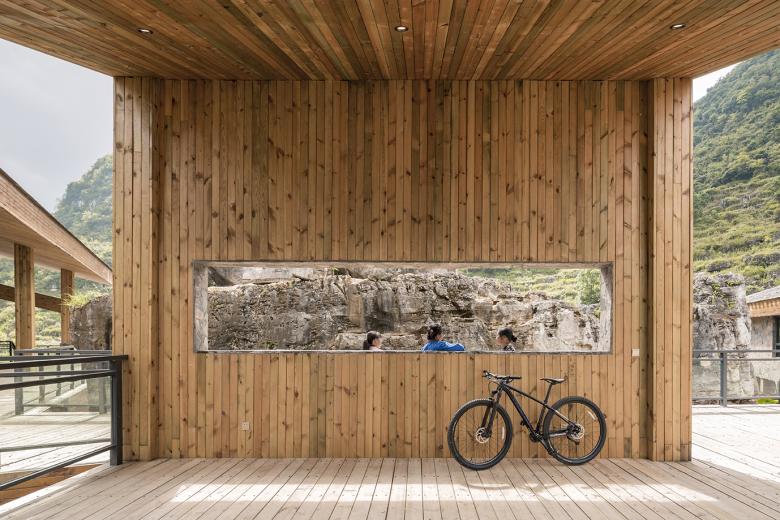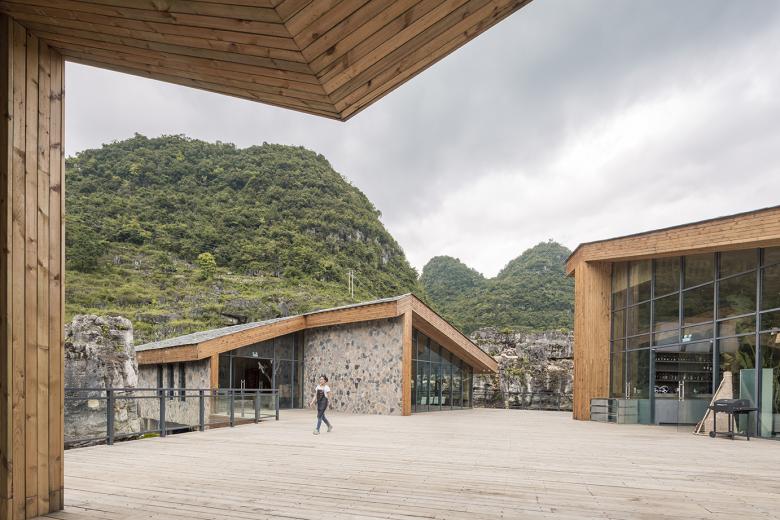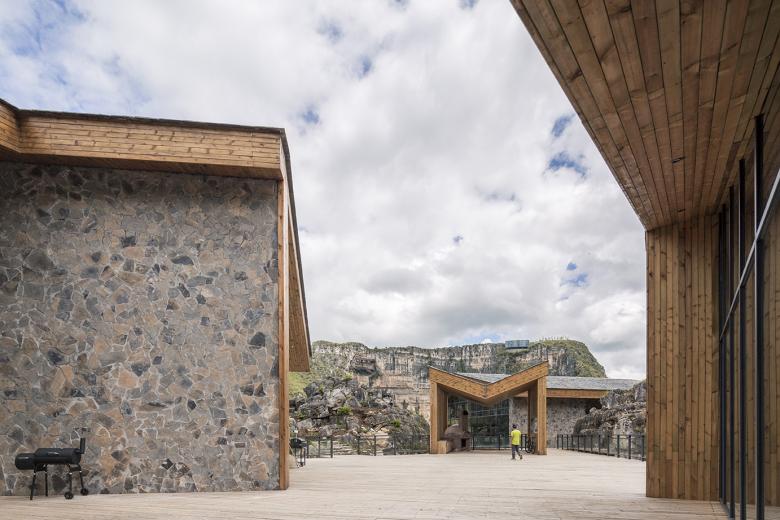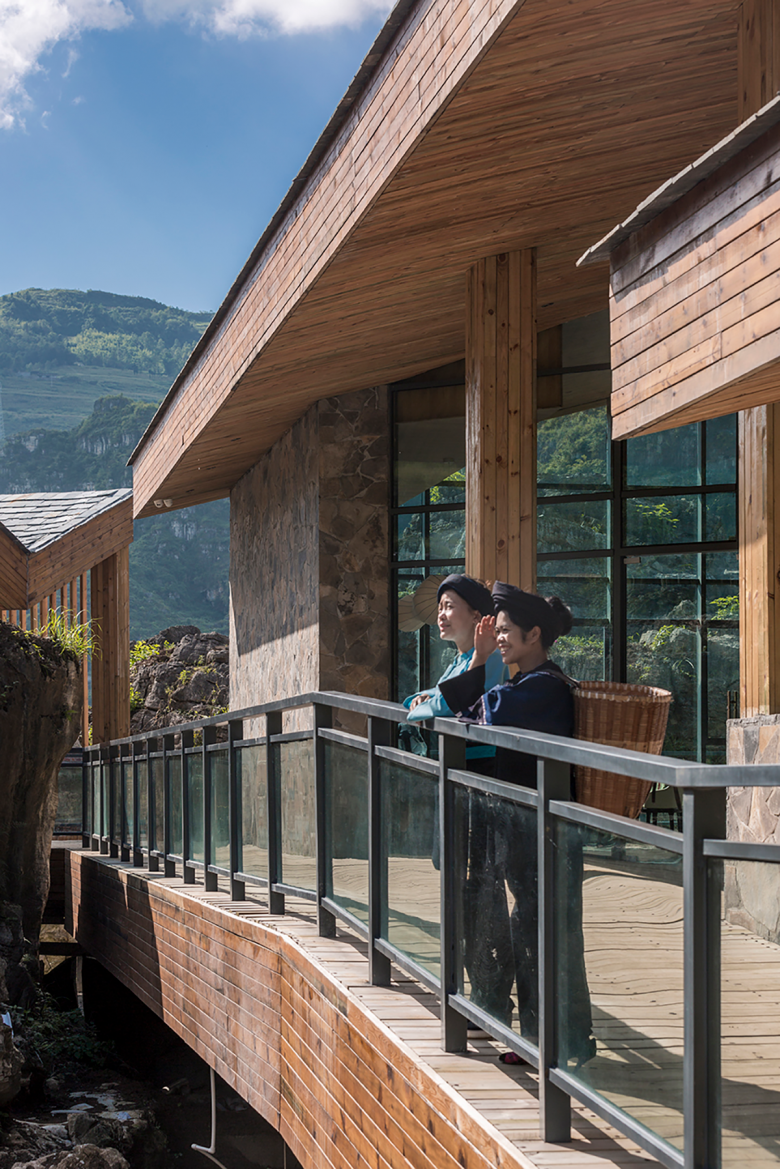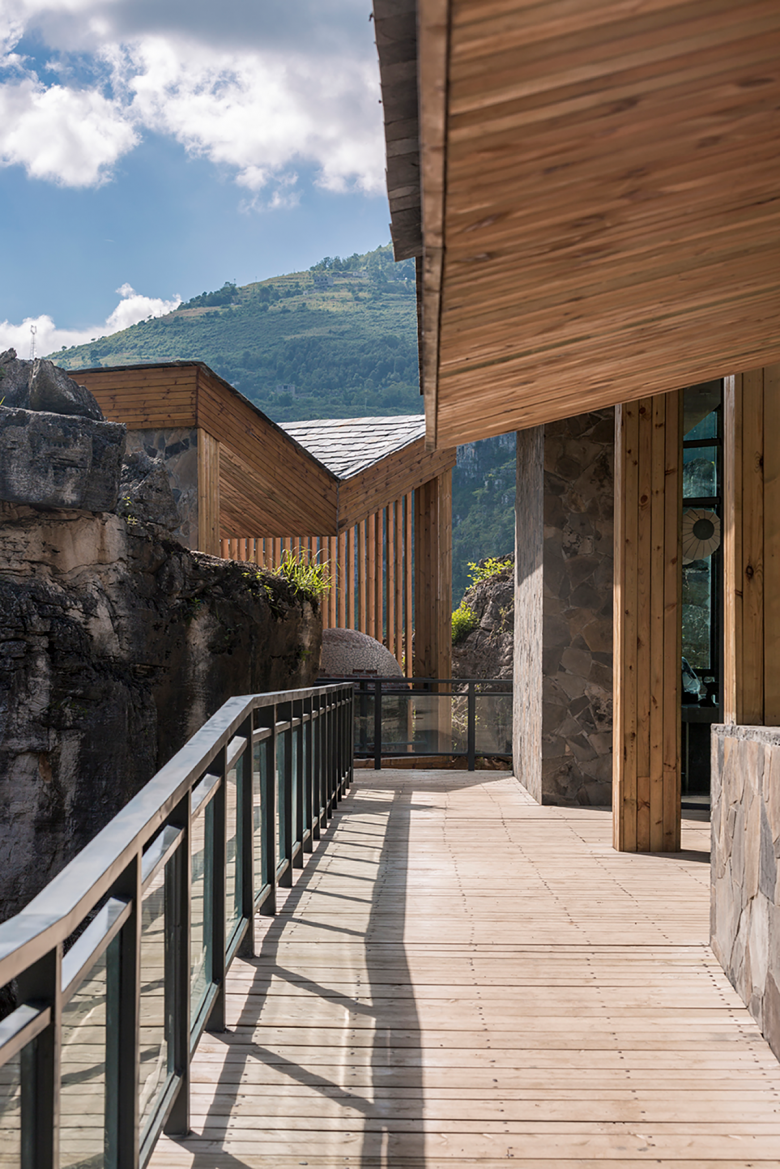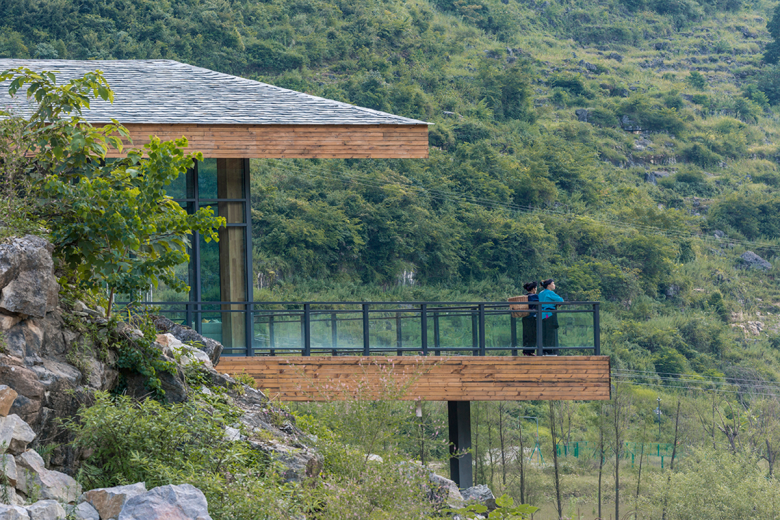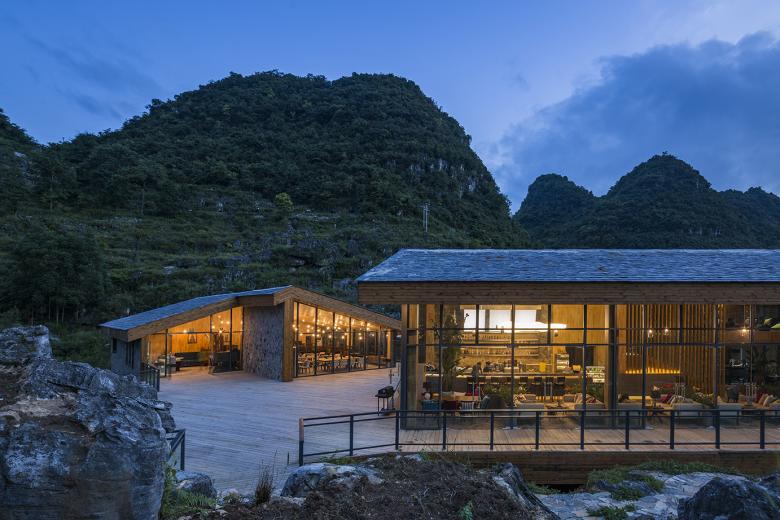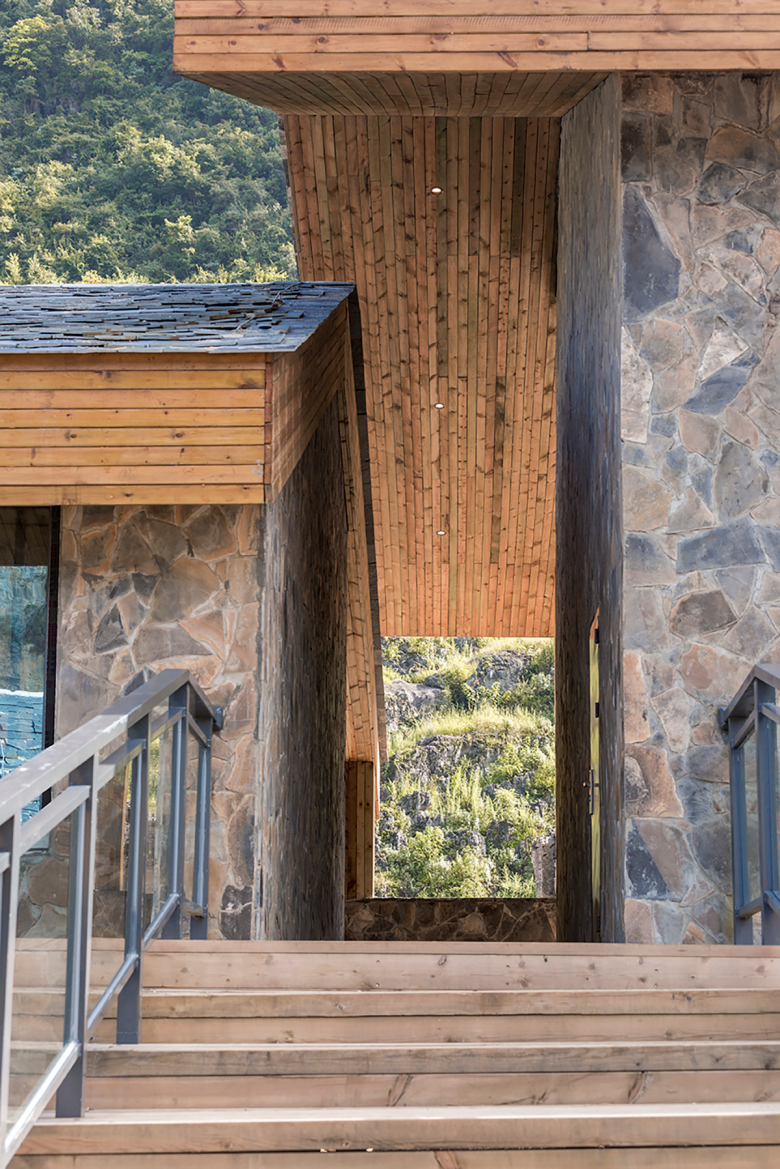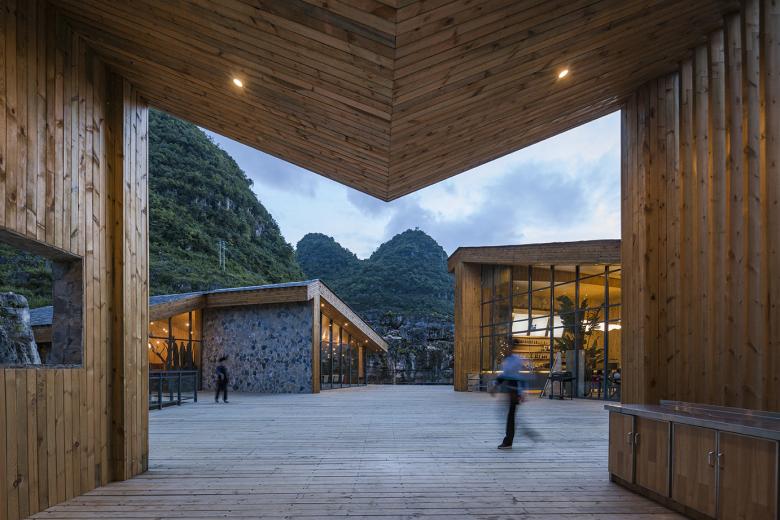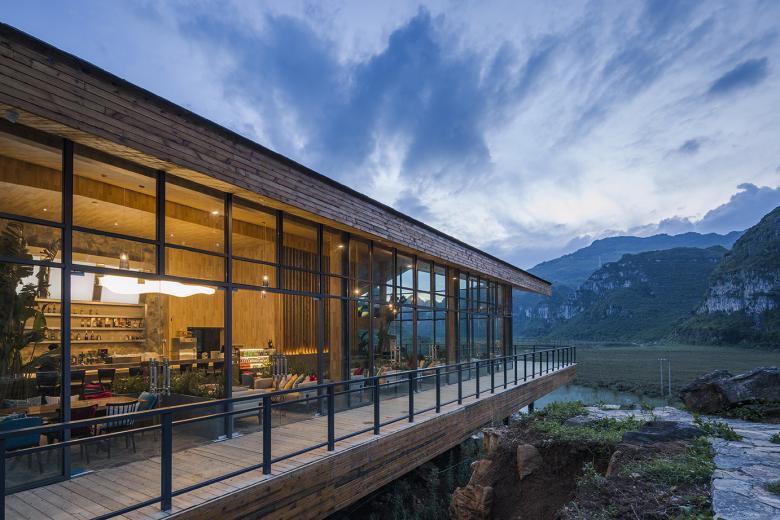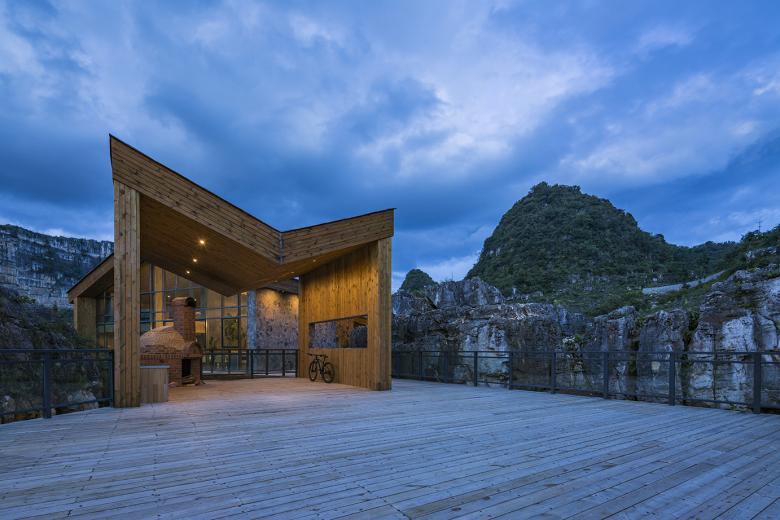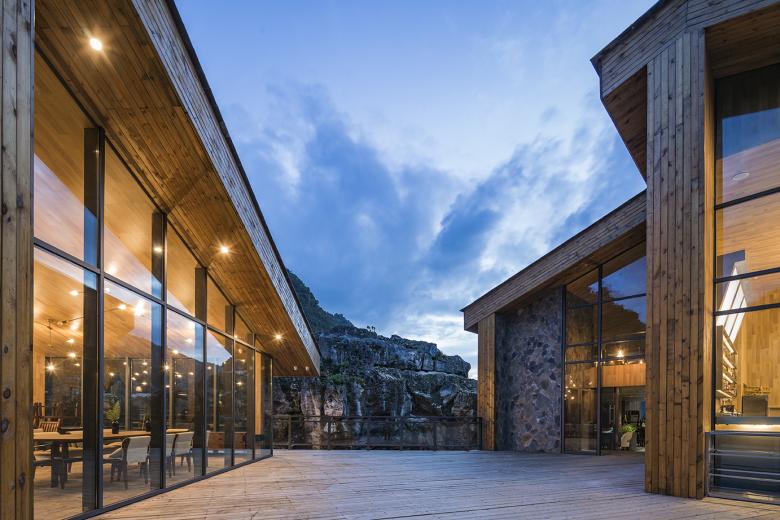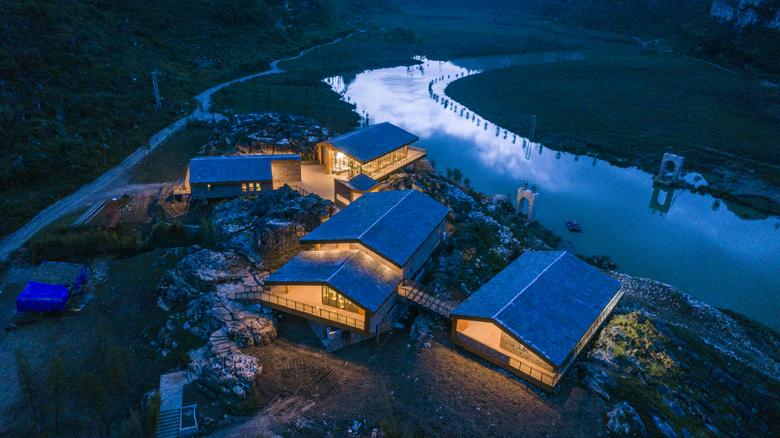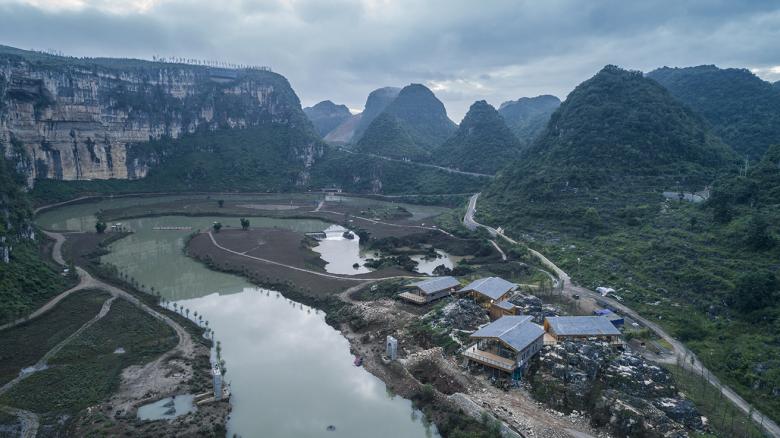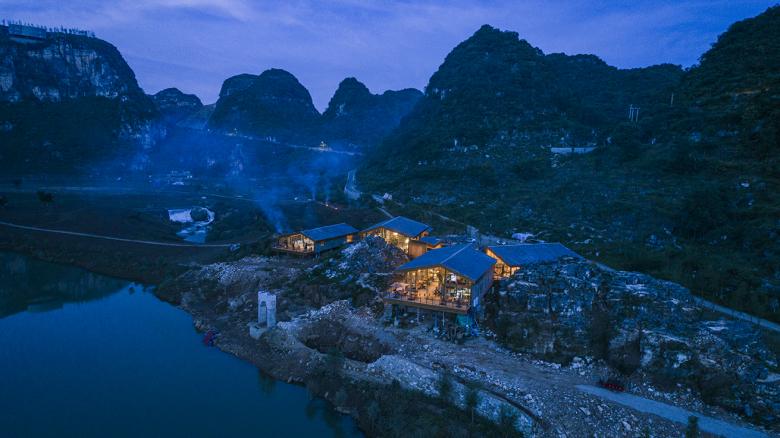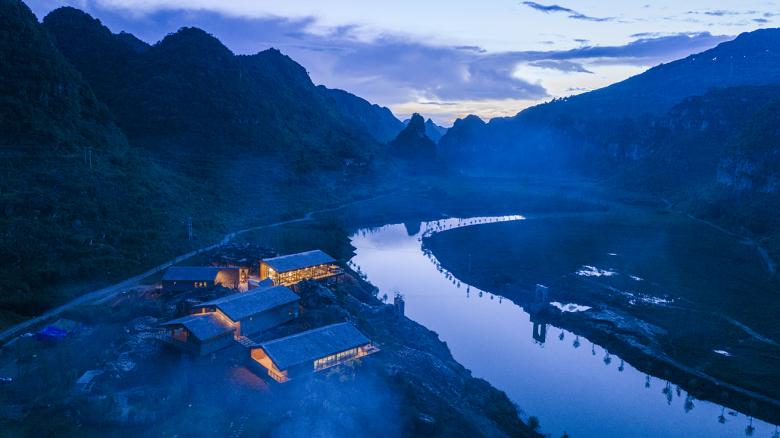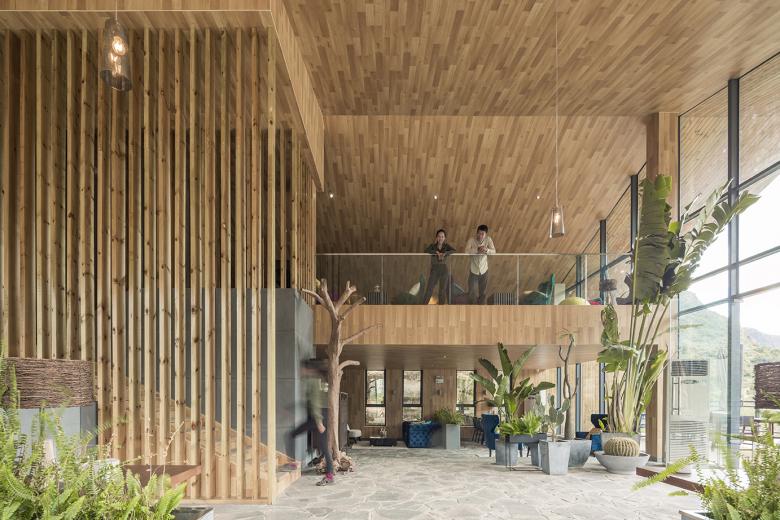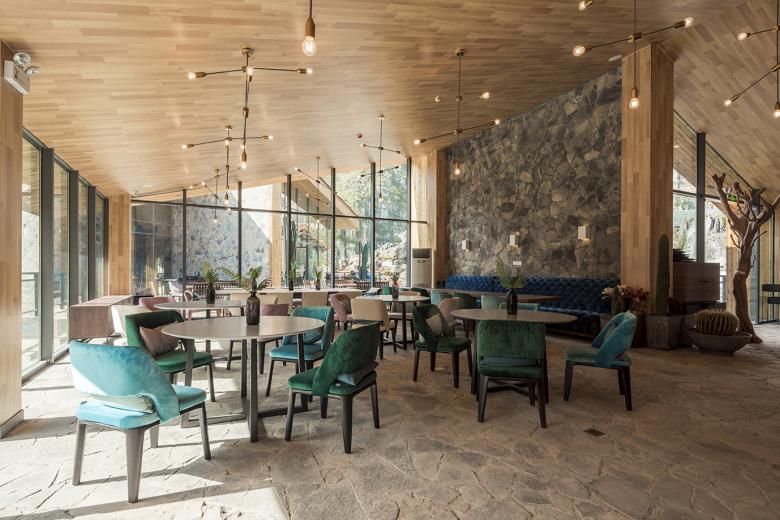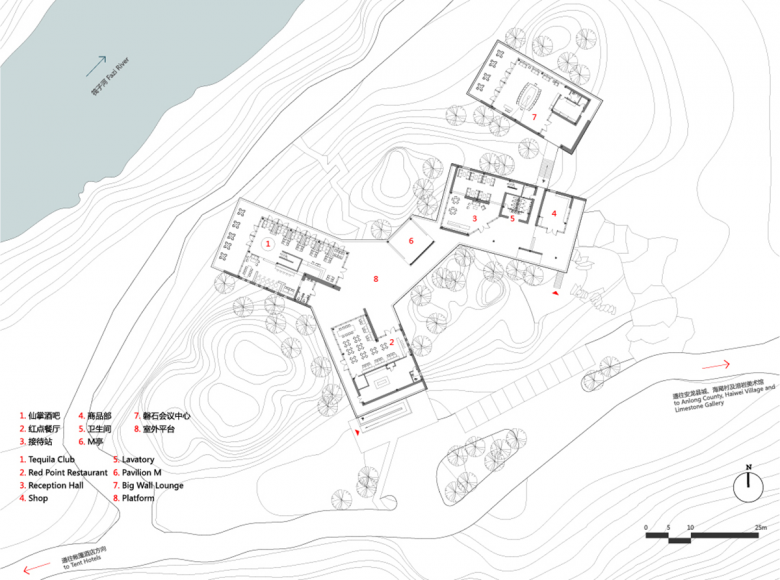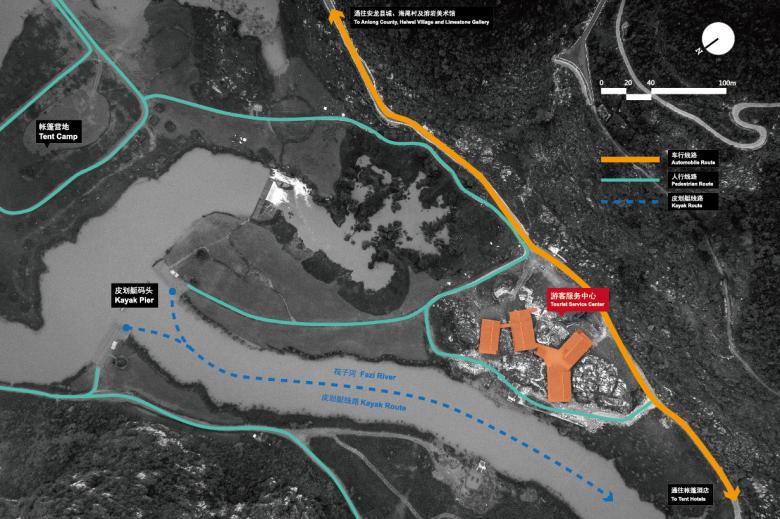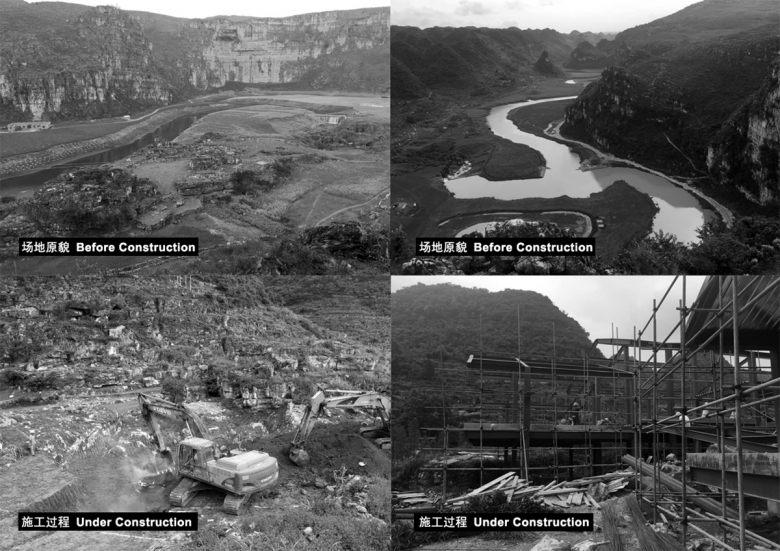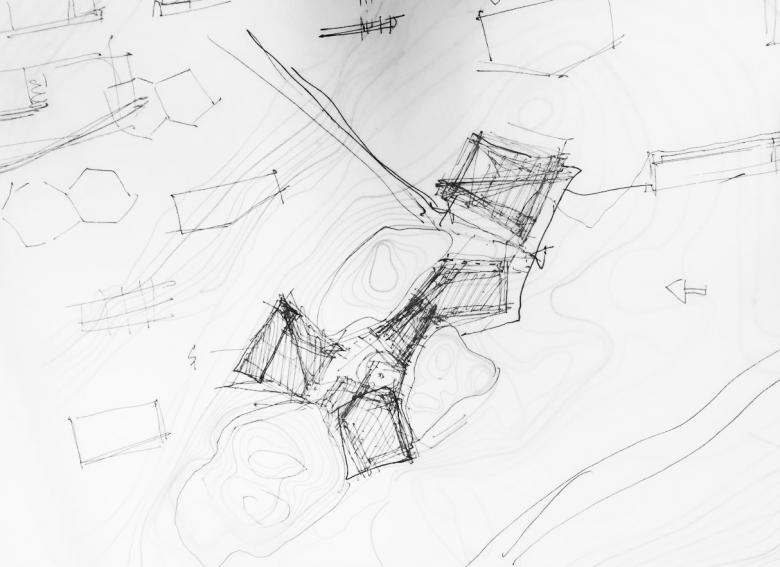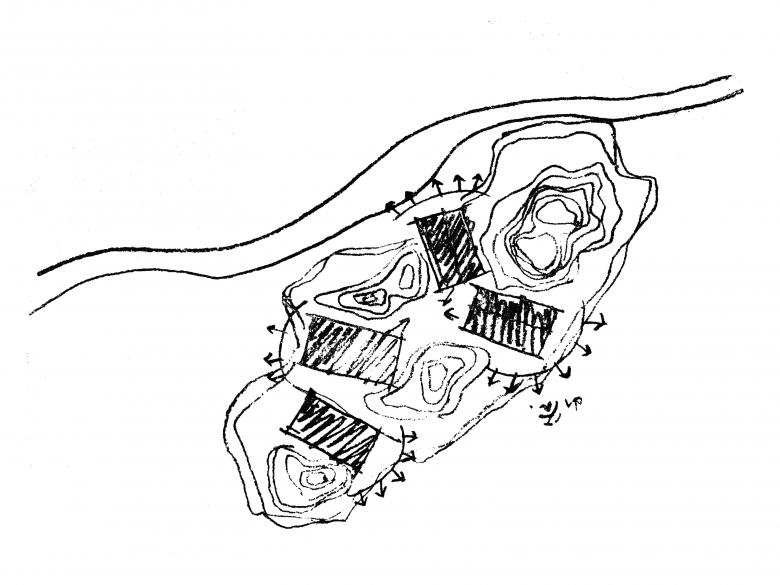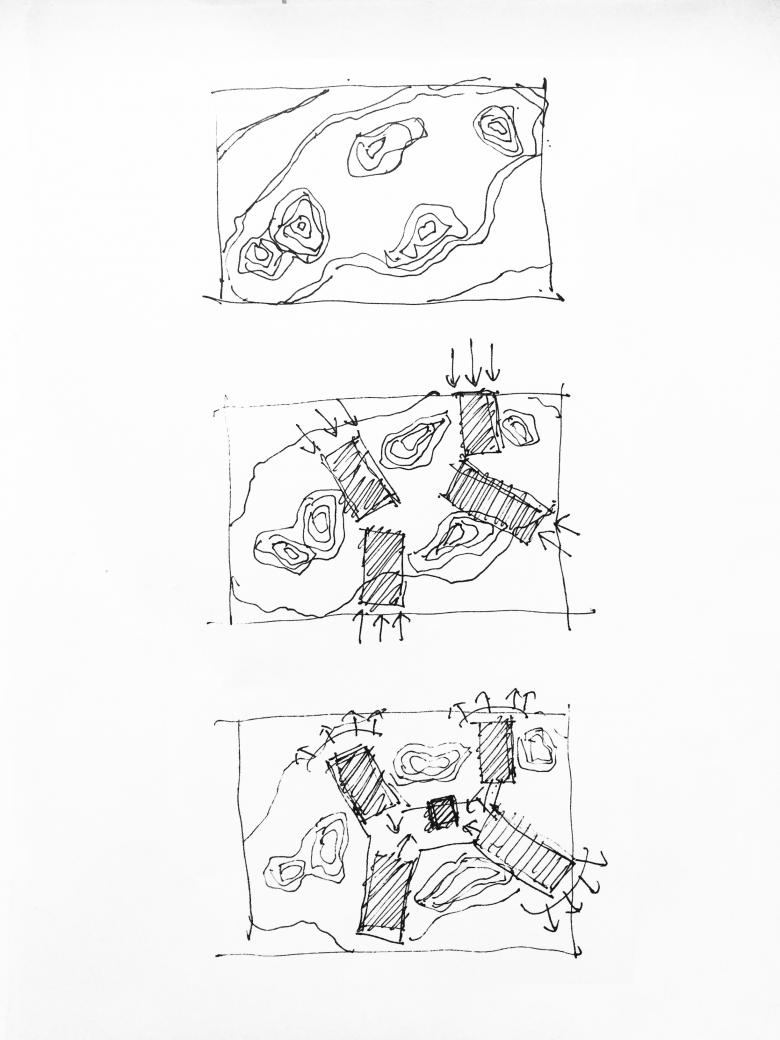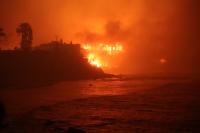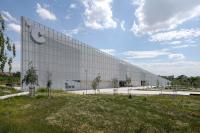Tourist Center of Anlong Limestone Resort
Anlong, China
Over the Hills: Tourist Center of Anlong Limestone Resort
Anlong Limestone Resort is located in a karst canyon of Dushan Town, Anlong County, Southwest Guizhou Autonomous Prefecture, Guizhou Province, covering the area of 700 acres with the magnificent scenery. The canyon is surrounded by the typical karst topography of rocks, one of which is a vertical cliff of one hundred meters, divided in two parts by a winding river that flows into the underground from two sinkholes (tiankeng). Outdoor extreme sports can be found the ideal site here including rock climbing, hot air balloon, paragliding, water sports and off-road vehicles.
In 2016, 3andwich Design / He Wei Studio was invited to participate in the planning and design of the Resort, and was in charge of designing a unique group of buildings: the Tourist Center of Anlong Limestone Resort.
Explicit and Implicit
The Tourist Center is located on the top of a hill that lies at the bottom of the canyon. The reason to choose this location is that the hill is the only high point of the canyon with a good view and very eye-catching, which could make this group of buildings the visual focus and resist from annual flooding. Since there is a lack of hydrologic data of this area, the design team can only determine the floor height according to the oral instructions of local people and construct the entire group of buildings on a high platform.
Due to the particularity of site selection, the first problem that the design team need to solve is the relationship between architecture and environment. The scenery of the canyon is powerful enough to become the protagonist of the Resort; Meanwhile, the buildings should be integrated into the environment, and then to improve the environment with its own characteristics. Therefore, it has become the starting point of design to deal with explicit and implicit of buildings .
During the site visiting, the designers have found that there are four peaks on top of the hill, in between of which are highlands. The designers break up the entire block into single pieces and hide them in the peaks and highlands, accommodating a symbiotic relationship of rocks and buildings: the buildings are hidden in the rocks while stretch out from the gaps.
The newly designed buildings are following the form of traditional double-slope residential houses in southwest Guizhou, whose facade materials are basically local stones. The designer team would not intend to highlight the buildings that could never been compared with the surrounding mountains and rivers. The only thing designers could do is to respect for the nature.
Internal and External
The Tourist Center consists of four parts: a reception hall, a restaurant (“Red Point Restaurant”), a club (“Tequila Club”) and a conference hall (“Big Wall Lounge”), whose overall layout has been distributed around the rocks , illustrating the coexisting status of appearance and cohesion.
Appearance means that each building has a good viewing surface of glass walls, through which the magnificent scenery of the canyon can be absorbed by the buildings, resonating between buildings and canyon. Sitting in the interior of the buildings or under the eaves, people can communicate with the rocks, rivers and earth.
Cohesion refers to the inward aggregation either between the buildings, or between the buildings and rocks, which has been defined and functionalized by an elevated platform. The platform can not only prevent flooding but also connect the outdoor space of each single buildings. All the entrances of the four buildings are open to the platform, where would be used as the communication space for the visitors. In the center, the semi-outdoor pavilion (“Pavilion M”) further strengthens the aggregation of the platform, where has been designed as the most dynamic part among the Tourist Center.
Void and Solid
As mentioned above, the relationship between buildings and environment is the starting point of the Tourist Center. The buildings have been inserted into the rocks, and merged with the environment with local architectural form and materials. At the same time, the building is the most important scenic spot and ornamental point in the entire canyon, illustrating the significance of the transformation between void and solid of the appearance. It is the mode of transformation that plays the key role as an important design language to distinguish from the traditional vernacular buildings.
According to the function, orientation and the relationship with the surrounding environment of the buildings, designers have connected “solid surfaces” (including roofs, walls and ground), to create C-shape tubes in section; Meanwhile the “void surfaces” (glass) have been wrapped in the epidermis of the tubes. Through the transformation between solid and void, completely different temperaments have been obtained from the exterior and interior spaces. Besides, the way that people experience the external spaces has been transformed from the single mode of traditional space to the dramatic pattern of modern space.
Project Information:
Project Name: Tourist Center of Anlong Limestone Resort
Location: Dushan Town, Anlong County, Southwest Guizhou Autonomous Prefecture, Guizhou Province
Client: Anlong Heyun Tourism and Cultural Development Co.,Ltd
Design Company: 3andwich Design / He Wei Studio
Principal Architect: He Wei
Design Team: Chen Long, Mi Jian, Sun Qi, Zhao Zhuoran, Song Ke, Wu Qiancheng
Consultant: Nie Jian, Wang Bin
Building area: 1400 sqm
Period of Design: May 2016 - Sept 2016
Period of Construction: Aug 2016 - Jul 2017
Resident Engineer: Jin Leizhu, He Xiugen
Cooperation Company: Mountain Journey (China) Co., Ltd.
Interior Construction Drawing: Hongshang Design
Interior Furnishing: TYMJ Home Furnishing
Photographer: Jin Weiqi
https://v.qq.com/x/page/k0529fisqeh.html
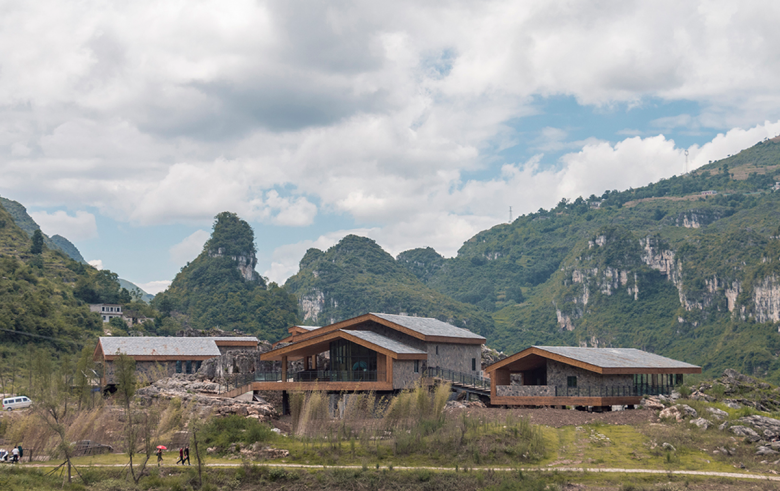
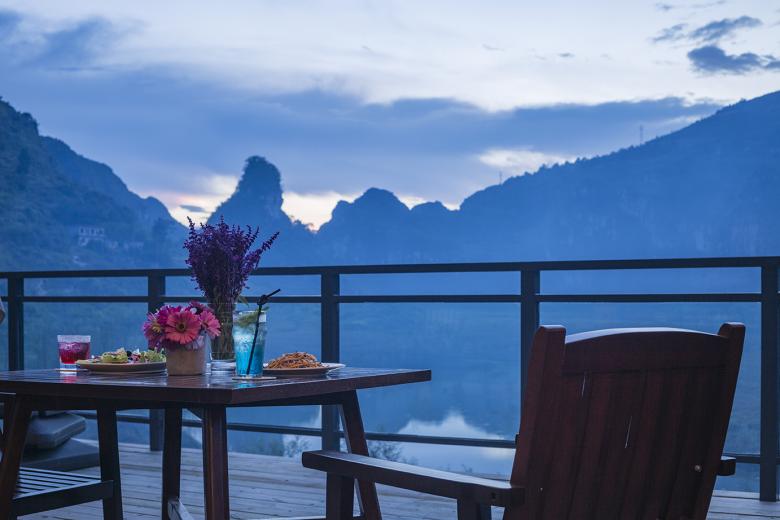
- Architects
- 3andwich Design / He Wei Studio
- Location
- Dushan Town, Anlong, China
- Year
- 2017
- Client
- Anlong Heyun Tourism and Cultural Development Co.
- Team
- He Wei, Chen Long, Mi Jian, Sun Qi, Zhao Zhuoran, Song Ke, Wu Qiancheng
- Cooperation
- Mountain Journey (China) Co., Ltd.
- Interior Construction Drawing
- Hongshang Design
- Interior Furnishing
- TYMJ Home Furnishing
- Cooperation
- Hua Long Horticulture - Horticulture
- Cooperation
- Ibride - Joe the Polar Bear Central Bookshelf
